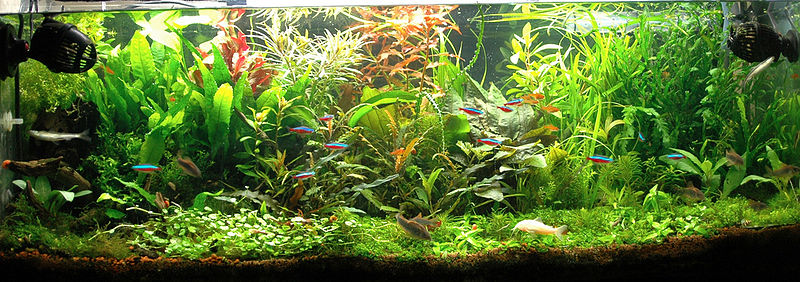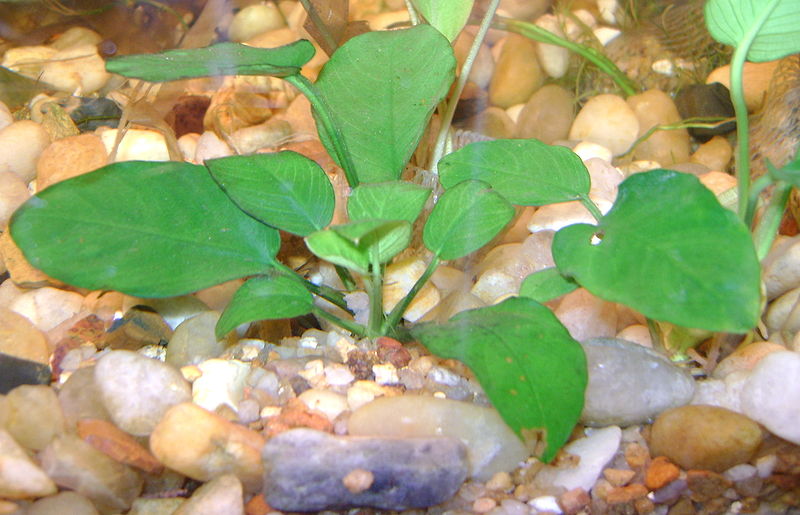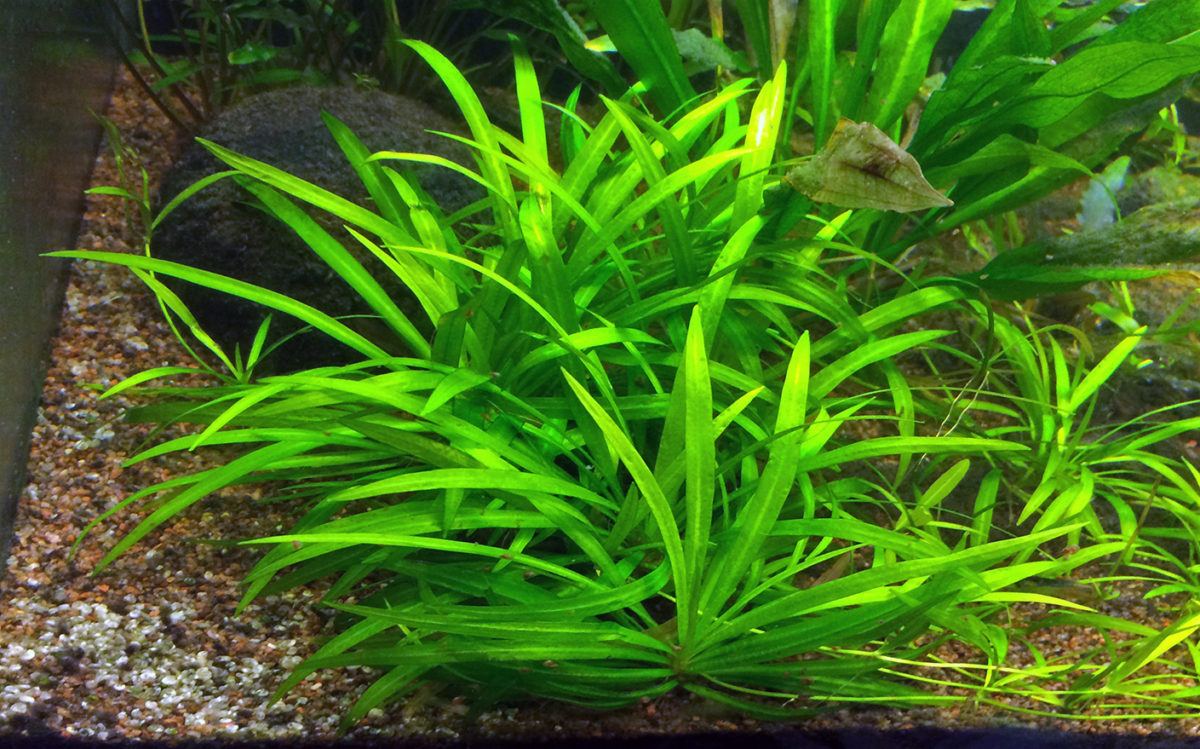Aquarium plants provide a pretty backdrop in any aquarium, but there are also many other ways that they can benefit your tank environment and your fish.
The best planted aquarium not only look incredible, but create the perfect home for your fish — improving the water quality and providing hiding spots.
But you can’t just load your tank up with any old plants and expect everything to go perfectly. A planted aquarium requires careful preparation in order to thrive.
Fear not! This in-depth guide to live aquarium plants will tell you everything you need to know before you get started.
Let’s jump right in…
Contents
Benefits of Aquarium Plants
These days there are some very convincing artificial plants available that can be an attractive addition to an aquarium and require no maintenance.
However, artificial plants do not benefit the tank environment in the same way as living, breathing plants.
Just like the plants in your garden, aquatic plants take in carbon dioxide from the water and release oxygen back into it, raising the overall oxygen levels and giving your fish more breathable water.

Fish also appreciate the natural shelter that plants provide as it offers them a place to hide when they need protection, and live aquarium plants may even encourage breeding.
Water cleanliness is crucial to any aquarium, and live plants can help improve this in multiple ways.
By absorbing organic waste created by fish and decaying matter within the tank, live aquarium plants act as a natural filter and they also provide a habitat where healthy bacteria which biologically filter the water can flourish.
The presence of plants in the aquarium also helps discourage algae growth which can pollute the water and block out light.
How to Set Up a Planted Aquarium
When setting up a planted aquarium there are a few important things to consider.
It’s best to start very gradually, only adding a few plants in the beginning and allowing them to establish before adding more.
It’s essential to not add fish to the tank in these early stages.
The aim is to allow the plants a chance to achieve the right balance of bacteria in the tank filter and substrate, and the correct balance of chemical elements in the water. This is called the cycling period. If fish are added too soon to a cycling aquarium, they may become ill or die.
Lighting is another important factor when establishing a planted aquarium.
Tanks usually come equipped with a fluorescent strip light mounted within the cover, however this is not ideal for plant growth and photosynthesis.
Aquatic plants require a lot of light to thrive but, on the other hand, too much light will result in algae growth. It’s a delicate balancing act that will require some trial and error with lighting.
In addition to this, certain species of plant need different light intensities to others. Fortunately there are lamps available that are specially designed with plant growth in mind — LED lamps are a good option.
Here’s a great video on setting up a small planted aquarium if you want some inspiration:
The Importance of a Quality Substrate
An aquarium substrate is the nutrient rich covering of the base level of the tank — usually either gravel or sand — where aquatic plants can establish their root systems and where beneficial bacteria can flourish.
The better quality your substrate, the healthier your plants and the tank environment in general will be.
Gravel substrates are commonly used, but the gravel layer should lie on top of an additional layer of peat moss, vermiculate, or other mineral rich commercially ready substrate in order to provide everything your plants need to survive.
Sand is also a popular choice, but as with gravel sand itself is not a sufficient substrate and can restrict root growth and limit oxygen supply.

Laterite is an iron rich, porous clay which is a good choice of quality substrate, as is fluorite — a porous clay gravel.
Different substrates can be layered together to achieve the ideal growing conditions, or it is possible to simply buy an eco-complete substrate which contains heterotrophic bacteria that contribute to plant growth and all the essential nutrients plants require.
Before you buy substrate for your aquarium, think carefully about what type of fish you will eventually be adding to it. Some bottom dwellers — for instance stingrays — require certain types of substrate that are gentle on their bodies as they brush along the bottom.
The Best Aquarium Plants for Beginners
When starting out with your first planted aquarium, it’s best to choose plants that will grow easily, be hardy and robust, and which will require the minimum of maintenance.
As your hobby develops you may find you wish to experiment with more exotic plants that require exact CO2 levels and specific lighting conditions in which to grow, but starting simple is the key to success.
Here are some of the best freshwater aquarium plants for beginners…
For Carpeting
Java Moss

As its name suggests, Java moss originates from southeast Asia and is one of the most popular aquatic plants.
Attractive and super easy to grow, lush Java moss will happily thrive in almost any conditions.
As long as your aquarium has clean water and is well lit, Java moss will attach itself to almost any still surface and grow to provide a lush green carpet of textured leaves.
Water Wisteria
Another very robust plant that is easy to grow is Water Wisteria.
It is native to India where its habitat is marshy, shallow water, and in aquariums it grows quickly and can reach up to 20 inches in height and can be used as a mid to background plant.
However, when planted on its side roots will grow along the length of the stem which will allow it to be used as a carpet plant as the fine leaves will grow upwards.
Strong light is best to encourage rapid growth, plus a rich substrate to ensure the Water Wisteria has all the nutrients it needs.
Dwarf Hairgrass
Perfect for providing a luxurious carpet made up of dense, fine green leaf blades up to 15 centimeters in length, Dwarf Hairgrass is easy to grow and low maintenance.
It can grow in a variety of conditions, and should be planted into the substrate in small clumps to create the most effective coverage.
Just like mowing a lawn, Dwarf Hairgrass can be trimmed back to achieve the desired height, and what’s more when trimmed before planting it appears to continue to grow to a similar height throughout its lifetime.
For The Mid- and Background
Java Fern
This beautiful fern comes in a few different varieties with slight differences in leaf shape and size, but generally grows up to 13.5 inches high.
The Java fern comes from Southeast Asia where it thrives in moist tropical conditions, but due to its hardy nature it also grows extremely well in the aquarium environment.
It’s also tough enough to stand up to attack from fish such as goldfish who love to nibble on leaves.
African Water Fern
You don’t even need a substrate to cultivate African Water Ferns thanks to their ability to attach itself well to items within the tank such as soft wood.
This is most likely due to its natural growing conditions in the fast flowing waters of the Congo.
Strictly a freshwater plant, it grows particularly well when placed in a current, and can reach a height of 22 inches so is best suited to larger tanks.
It does however grow slowly and low light levels can affect growth and alter the color of the leaves.
Anubias Nana

An excellent foreground plant, Anubias Nana has pleasing pointed oval leaves and grows in clusters.
It is indigenous to West Africa and Nigeria where it can be found everywhere in the shallow waters of shaded streams, marshes, and ponds. Its leaves are an intense dark green color and it will grow to around 8 inches in height.
It can also be very easily propagated and when doing well will even occasionally produce elegant white flowers on long stems.
Amazon Sword

Named for its long, blade like leaves, the Amazon Sword is an impressive plant which can really make a statement in an aquarium.
It ideally needs a fairly loose substrate to take root effectively, and with a height of up to 24 inches it is best suited to large or tall aquariums that have enough space for the leaves to remain submerged, and enough space so as the plant does not swamp the tank and leave little space for the fish.
Dwarf Sagittaria
Naturally found in both Columbia and the United States where it grows in coastal areas where it prefers slightly salty water.
That said, this hardy plant is extremely undemanding and also grows beautifully in freshwater, although it can be a little sensitive to low iron levels.
Dwarf Sagittaria has a grass like appearance with long, delicate leaves that grow up to 12 inches high depending on the variety.
It grows in clumps which can look very effective when placed in the middle or at the back of an aquarium.
Green Tiger Lotus
The glorious African Green Tiger Lotus is a species of lily with large, lily pad type leaves which can reach 6 inches in diameter, and extremely aromatic — usually white — flowers 2½ inches in diameter when in bloom.
Once planted, the bulb of the Green Tiger Lotus puts out a large root system which allows it to grow well in most conditions.
In fact it grows so well that this can sometimes be a problem, and maintenance is needed to prevent the lotus taking over the tank!
And that’s everything you need to know about aquarium plants!
Have you set up a planted aquarium before?
Featured image is by úlfhams_víkingur and used under a CC BY 2.0 licence




